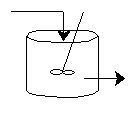

|
Type of Reactor |
Characteristics |
|
Continuously Stirred Tank Reactor (CSTR) |
Run at steady state with continuous flow of reactants and products; the feed assumes a uniform composition throughout the reactor, exit stream has the same composition as in the tank |
Kinds of Phases Present |
Usage |
Advantages |
Disadvantages |
1. Liquid phase 2. Gas-liquid rxns 3. Solid-liquid rxns |
1. When agitation is required 2. Series configurations for different concentration streams |
1. Continuous operation 2. Good temperature control 3. Easily adapts to two phase runs 4. Good control 5. Simplicity of construction 6 Low operating (labor) cost 7. Easy to clean |
1. Lowest conversion per unit volume 2. By-passing and channeling possible with poor agitation |
General Mole Balance Equation

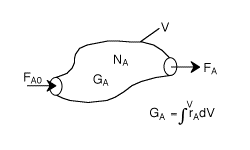
Assumptions
1) Steady state therefore 
2) Well mixed therefore rA is the same throughout the reactor

Rearranging the generation

In terms of conversion


Reactor Sizing
Given –rA as a function of conversion, –rA = f(X), one can size any type of reactor. The volume of a CSTR can be represented as the shaded areas in the Levenspiel Plot shown below:
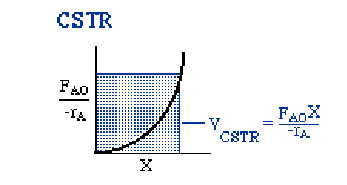
Reactors in Series
Given –rA as a function of conversion, , –rA = f(X), one can also design any sequence of reactors in series provided there are no side streams by defining the overall conversion at any point.

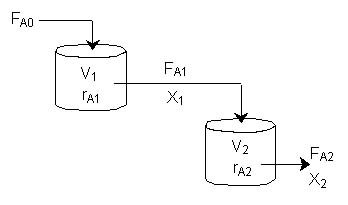
Mole Balance on Reactor 1



Mole Balance on Reactor 2



Given –rA = f(X) the Levenspiel Plot can be used to find the reactor volume
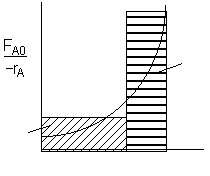
For a PFR between two CSTRs
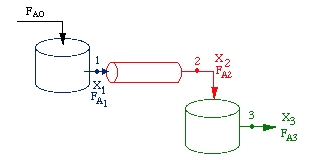
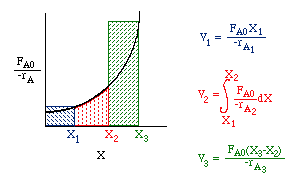
 CSTR Type 1 Home Problem
CSTR Type 1 Home Problem CSTR Type 2 Home Problem
CSTR Type 2 Home Problem CSTR Type 3 Home Problem
CSTR Type 3 Home Problem